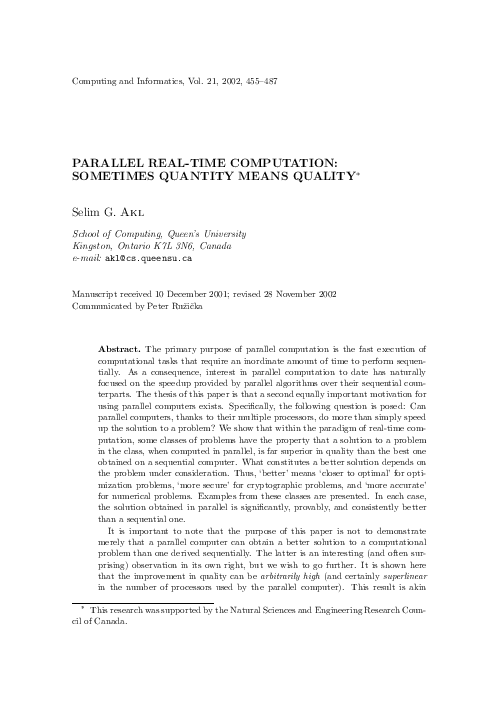Parallel Real-Time Computation: Sometimes Quantity Means Quality
keywords: Parallelism, real-time computation, optimization, cryptography, numerical analysis
The primary purpose of parallel computation is the fast execution of computational tasks that require an inordinate amount of time to perform sequentially. As a consequence, interest in parallel computation to date has naturally focused on the speedup provided by parallel algorithms over their sequential counterparts. The thesis of this paper is that a second equally important motivation for using parallel computers exists. Specifically, the following question is posed: Can parallel computers, thanks to their multiple processors, do more than simply speed up the solution to a problem? We show that within the paradigm of real-time computation, some classes of problems have the property that a solution to a problem in the class, when computed in parallel, is far superior in quality than the best one obtained on a sequential computer. What constitutes a better solution depends on the problem under consideration. Thus, `better' means `closer to optimal' for optimization problems, `more secure' for cryptographic problems, and `more accurate' for numerical problems. Examples from these classes are presented. In each case, the solution obtained in parallel is significantly, provably, and consistently better than a sequential one. It is important to note that the purpose of this paper is not to demonstrate merely that a parallel computer can obtain a better solution to a computational problem than one derived sequentially. The latter is an interesting (and often surprising) observation in its own right, but we wish to go further. It is shown here that the improvement in quality can be arbitrarily high (and certainly superlinear in the number of processors used by the parallel computer). This result is akin to superlinear speedup --- a phenomenon itself originally thought to be impossible.
reference: Vol. 21, 2002, No. 5, pp. 455–487


